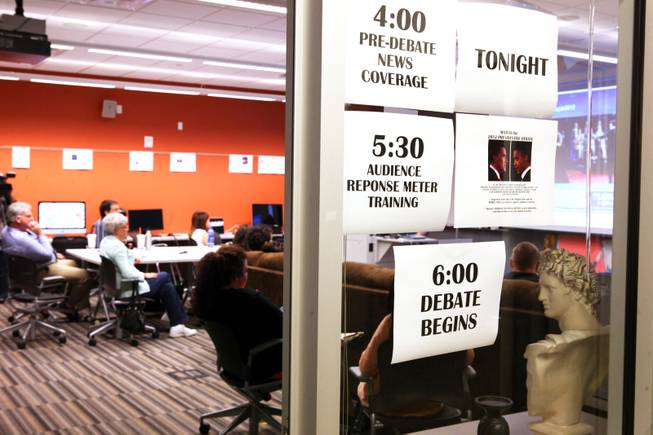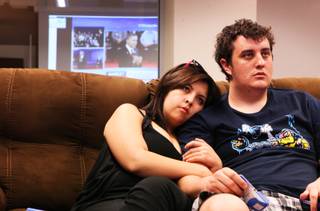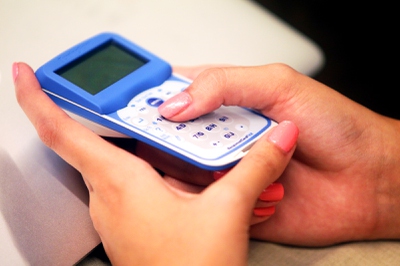
UNLV students and faculty watch the presidential debate with audience response meters at Greenspun Hall in UNLV on Tuesday, October 16, 2012.
Wednesday, Oct. 17, 2012 | 2 a.m.
The results from UNLV’s first-ever presidential debate live polling on Tuesday were lopsided and inconsistent, but that didn’t bother focus group leader Ryan Hamilton.
Ten UNLV students and three professors took part in the polling inside the Greenspun School of Journalism’s new Emerging Technology Lab. Each was armed with a brand-new pocket-size device called an audience response meter that was used to answer questions throughout the debate.
Three students left before the end, and while nine out of 10 participants believed President Barack Obama won the debate, the sample size was too small to be significant. Still, Hamilton said the event was a success. It sparked conversation, engaged students in the debate and proved that the technology can be used on a larger scale.
“The expectation is to become familiar enough with the technology to teach other professors and graduate students so that they can use it,” Hamilton said. “The idea is the emerging technologies lab is a tool for the college to engage students in relevant political activities.”
The event began with a question about which candidate they expected to win the debate, with Obama being favored over his Republican rival Mitt Romney. As the candidates proceeded to duke it out over questions about the economy, energy and the attack in Libya, the poll participants answered questions providing live snapshots of their opinions.
The group was split between Obama and Romney on who had better opening remarks, but Obama led the way after that. The president received the majority of votes in terms of best performance and exceeding expectations.
Once the debate finished, students and professors discussed what they heard.
UNLV graduate student Meline Ortega said she watched the previous debate at home, and was frequently frustrated with Obama’s lackluster responses. This time she felt he was more prepared and had a better performance. She said she wanted to participate in the polling to assess other people’s opinions.
“It was interesting for me to see how people are perceiving it,” Ortega said. “Although there seemed to be a little bit of a bias. Most people were kind of rooting for Obama in the beginning.”
Graduate student Jennifer Liese thought Romney would win the debate in the start, but was impressed by Obama’s performance. She felt Romney was too wishy-washy on his policies.
Meanwhile, UNLV senior Garrett Estrada felt that Romney performed better in the debate. He said his father owns a small business and had seen him struggle to gain traction in the economy. He particularly liked Romney’s plan to offer a tax break to small businesses.
Estrada said he enjoyed the chance to share his opinion throughout the debate through the polling.
“I thought (the polling) was cool — I just wish there was a larger sample size,” Estrada said. “Because there weren't enough people to really get an overall view of things.”
Hamilton said with the success of the test run, he plans to expand participation to utilize all 57 audience response meters for the next debate on Oct. 22. With more balanced data, he hopes it could provide a snap shot of the UNLV campus during the presidential debate.
At the very least, however, he’ll know how to use the technology.



Join the Discussion:
Check this out for a full explanation of our conversion to the LiveFyre commenting system and instructions on how to sign up for an account.
Full comments policy